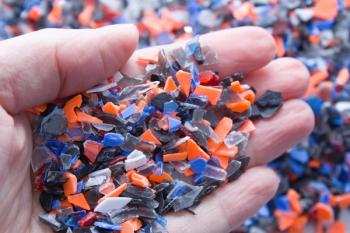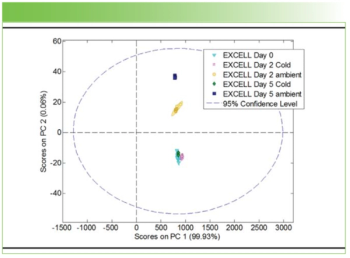
Using Surface Enhanced Raman Spectroscopy to Analyze COVID-19 Virus
In a recent study, scientists used a combination of SERS, butanol, and gold nanoparticles to analyze the virus.
To better protect humans against diseases like COVID-19, scientists are investigating a new means of testing for the virus that causes COVID-19 using a butanol-induced self-assembly of gold nanoparticles (AuNPs) (1).
Severe acute respiratory syndrome coronavirus 2, more commonly referred to as SARS-CoV-2, is the virus that started the COVID-19 pandemic. Though scientists have taken steps to create tests and vaccines that can detect and protect against different variants, the virus continues to evolve overtime with new strains. A team of scientists, whose work was published in the journal Analytical Chemistry, is investigating a new method for detecting COVID-19 using a mixture of butanol and gold nanoparticles (1).
The team mixed an aqueous droplet containing AuNPs and target DNAs with a droplet of butanol. The butanol induced dehydration, which enriches the target DNAs around the AuNPs and increased the loading densities of the target DNAs. This created a reproducible and highly sensitive surface-enhanced Raman scattering (SERS) substrate, which was evaluated using Raman spectroscopy. The results showed the Raman signals having strong electromagnetic enhancements.
After creating the SERS substrate from the butanol and AuNPs, it was then used in a trial run, using SERS to detect SARS-CoV-2; in the end, the limit of detection obtained was 3.1 × 10–15 M. To the scientists, this proved sufficiently sensitive, and the lack of thermocycling steps meant significantly reduced diagnostic times as well. The butanol-induced self-assembly of AuNPs seemed effective in detecting SARS-CoV-2. In turn, this technique may hold potential in detecting other viruses. “The results suggest the potential of this approach for developing rapid diagnostic platforms for other biomolecules and infectious diseases,” wrote the scientists in the Analytical Chemistry study (1).
Raman spectroscopy has previously been used to analyze COVID-19. An April study, published in Biophysical Reviews, found that by using a SERS technique allowed for rapid sampling, low limits of detection (LODs), sensitivity and specificity, as well as a broad linear range (2). "The Raman spectroscopy technique is expected to provide fast, reliable, portable, low-cost sensors for the viral detection,” the researchers wrote (2).
Reference
(1) Wu, Y.; Yu, Q.; Joung, Y.; Jeon, C. S.; Lee, S.; Pyun, S. H.; Joo, S-W.; Chen, L.; Choo, J. Highly Uniform Self-Assembly of Gold Nanoparticles by Butanol-Induced Dehydration and Its SERS Applications in SARS-CoV-2 Detection. Anal. Chem. 2023, 95 (34), 12710-12718. DOI:
(2) Lukose, J.; Barik, A. K.; N, M; M, S. P.; George, S. D.; Murukeshan, V. M.; Chidangil, S. Raman spectroscopy for viral diagnostics. Biophys. Rev. 2023, 15 (2), 199–221. DOI:
Newsletter
Get essential updates on the latest spectroscopy technologies, regulatory standards, and best practices—subscribe today to Spectroscopy.




